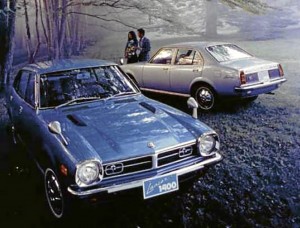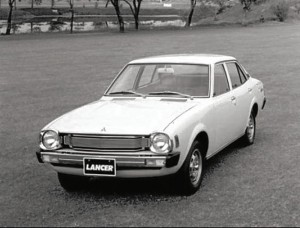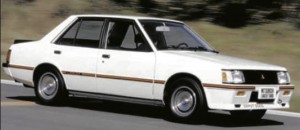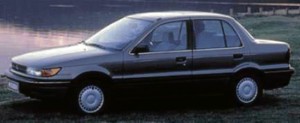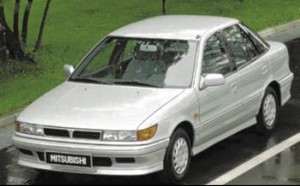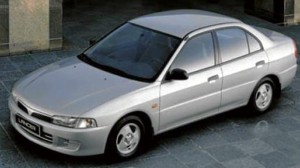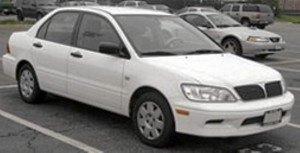Suave re-entry

THE NEW Mirage is a global product, conceived once again to offer a very affordable price to combat rising fuel costs and the ever-tightening emissions and crash regulations.
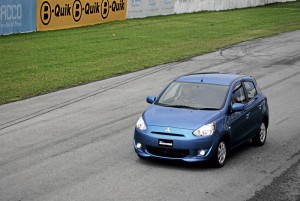 The first trip I’ve gone to this year was to see the sixth-generation Mitsubishi Mirage during its launch and test drive at the Bira Circuit, and visit its production facility at Laem Chabang, Chonburi, Thailand, a few months back. I have been harping for a very long time that Mitsubishi’s chink in its almost indomitable armor is the lack of a small car. Sure, the Lancer segment and Galant segment could also use help. But seeing that the market has slowly shifted almost completely to CRDi-diesel powered SUV’s, pickups and MPV’s and small, b-segment cars, it was obvious where Mitsubishi needed to focus on. The SUV/pickup segment is Mitsubishi’s foothold on the local market, with the Strada and Motero Sport having countless variants to suit a variety of budgets and more than adequate supplies to alleviate long waiting periods associated with their key competitors. Mitsubishi needed a complimentary vehicle to their solid SUV/pickup stranglehold on the segment.
The first trip I’ve gone to this year was to see the sixth-generation Mitsubishi Mirage during its launch and test drive at the Bira Circuit, and visit its production facility at Laem Chabang, Chonburi, Thailand, a few months back. I have been harping for a very long time that Mitsubishi’s chink in its almost indomitable armor is the lack of a small car. Sure, the Lancer segment and Galant segment could also use help. But seeing that the market has slowly shifted almost completely to CRDi-diesel powered SUV’s, pickups and MPV’s and small, b-segment cars, it was obvious where Mitsubishi needed to focus on. The SUV/pickup segment is Mitsubishi’s foothold on the local market, with the Strada and Motero Sport having countless variants to suit a variety of budgets and more than adequate supplies to alleviate long waiting periods associated with their key competitors. Mitsubishi needed a complimentary vehicle to their solid SUV/pickup stranglehold on the segment.
Enter the Mirage.
The Mirage nameplate has a long and memorable past, and browsing through the Web, it seems Mitsubishi spawned a whole lot of other cars based originally on the Mirage concept (an entry-level vehicle) but got them bigger, better equipped and modified to suit specific markets.
In 1978, Mitsubishi unveiled the first-generation Mirage in response to the oil crisis of 1973. Five years is a long time to wait, but the boys with the Diamond Star logo made good of them. The Mirage then quickly became a popular entry-level vehicle in Japan and the rest of Asia as well as Europe, Australia, and even the United States and United Kingdom, where it was called the Colt.
In 1983, Mitsubishi unveiled the second-generation Mirage and its other derivatives. It was here that the Mirage/Colt lineup started to merge with the Lancer lineup as the two models started sharing more and more parts under their skin. Whereas previous Lancers used to be rear-wheel driven (think the box-type and L-type Lancers), the Mirage/Colt-based Lancers were now FWD. The second-generation Mirage/Colt/Lancer also formed the basis for the Proton Saga, Malaysia’s first locally built car. Later models of the Saga, particularly the five-door estate/hatchback Aeroback variant, were styled significantly much more differently than the Mitsubishis. The second-generation Mirages also started the slow shift from carbureted fuel injection to electronic fuel injection in later variants of the 1.6-liter Sirius engines, which also featured turbocharging.
The year 1987 saw the release of the third-generation Colt/Mirage-based FWD Lancer, with the 3-door hatchback retaining the Colt nameplate for most markets. It was this particular vehicle, along with Toyota’s AE92 model Corolla, that most of the people in my generation learned how to drive (yes, I am still quite young contrary to rumors). Styling was heavily dictated by the Lancer’s big-brother, the Galant (and the infamous GTi, the first brute in a suit in Metro Manila’s streets with its legendary 4G63 DOHC 16-valve engine). It was also heavily marketed in the United States by Dodge as the Colt. Seems confusing, but thankfully, the end of confusion is near.
The year 1991 saw the launch of the fourth-generation Mirage/Colt-based FWD Lancer sedans and station wagons, with the smaller three-door hatchbacks retaining either a Colt or Mirage nameplate for other markets. And for the first time, there was a coupe variant. This was also a period when Mitsubishi unveiled their all-new engine lineup (4G92, 4G93, 4G15 as examples for Lancer and Mitsu-philes) and came up with a vast majority of new engines to power on the Lancers into the future. For enthusiasts, the fourth generation was also the beginning of the Lancer Evolution era, which featured the turbocharged 4G63 engine from the larger Galant VR-4 Mitsubishi had campaigned at the World Rally Championship, but now placed in a smaller Lancer body. Success eluded Mitsubishi at the WRC front but they were close.
It was post-bubble Japanese economy in 1995 when Mitsubishi released the fifth-generation Mirage/Colt-based Lancer. Much as above, with the sedans growing bigger and the coupe shrinking, Mitsubishi unveiled the Evolution 4, 5, 6 and 6.5 Tommi Makkinen Edition or TME, which won multiple World Rally Driver’s Championships with “Turbo” Tommi Makkinen in 1996, 1997, 1998 and 1999 and came very close in 2000 and 2001. Okay, it’s not very significant, but as an enthusiast, you can see how the Mirage spawned the modern Lancer, which in turn spawned the Evolution. Respect is needed. Sadly, in 2003, Mitsubishi killed the Mirage nameplate when this model Lancer and all its variants ceased production.
In 2002 however, Mitsubishi introduced a small 5-door hatchback positioned below the Lancer, and called it exclusively as the Colt, sold only in select RHD markets. It was never conceived to be a global car, and looks very Japanese. This was in production until late 2011 and in early 2012 as a 2012 model. The Colt was expensive because it shared technology with SMART CAR’s Forfour minicar in Europe, but without the added benefit of tax incentives and the like, making it expensive to produce and unacceptable in a variety of markets. The released a Ralliart version with a turbocharged 1.5-liter engine, and many thought and dreamt that it would be Mitsubishi’s next World Rally Car.
Fast forward to 2012 and I’m at Bira Circuit in Chonburi, strapping myself inside the all-new Mirage to have a go on the track. The Mirage/Colt nameplates have been differentiated, with the Lancer going its own separate way as well. The new Mirage is a global product, conceived once again to offer a very affordable price to combat rising fuel costs and the ever-tightening emissions and crash regulations. Base variants start at P498,000 whereas top model variants will be at the P638,000 range with CVT transmission, ABS-EBD brakes, dual airbags and a multimedia system. Despite all the goodies underneath the skin, it feels somewhat basic to the touch, but a simplicity that will withstand the test of time, abuse and dirty little mitts of people like me who have come to live out their race car driver fantasies on the track. So a 1.2-liter 3-cylinder engine, even with MIVEC, will not scare you out of your wits. But it’s still loads of fun, with surprisingly good room inside—even for my almost 6-foot height, 42-inch girth and 11 EEE footsize. Who says you can’t teach an old dog new tricks?











